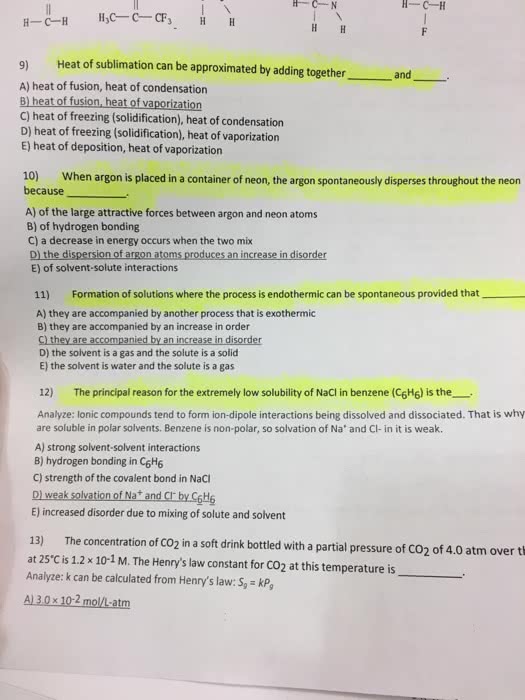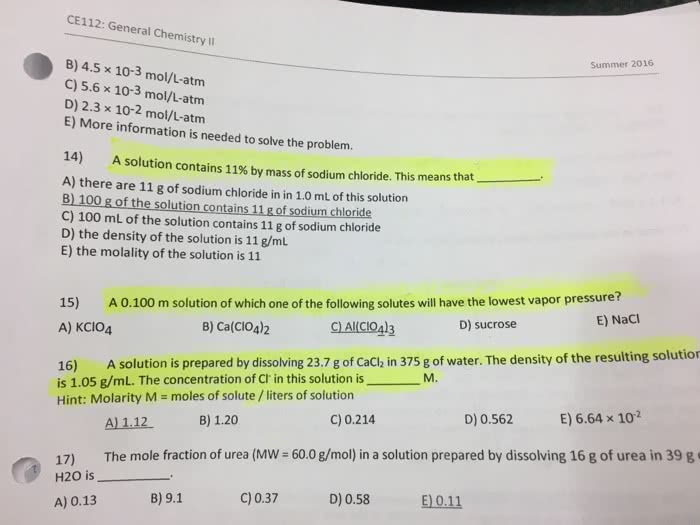CHE 116 Chapter Notes - Chapter 13: Solution Process, Supersaturation, Spontaneous Process
Document Summary
A solution is formed when one substance disperses uniformly throughout another. Ability to form solutions depends on two factors: the natural tendency of substances to mix and spread into larger volumes when not restrained in some way, the types of intermolecular interactions involved in the solution process. The mixing of gases is a spontaneous process. The entropy of a system increases if its degree of disorder increases , or if its energy becomes dispersed over a greater number of particles. The formation of solutions is favored by the increase in entropy that accompanies mixing. Solution processes are typically accompanied by changes in enthalpy. Three components to the solution process: a cluster of n solute particles must separate from one another, a cluster of m solvent particles separate form one another, these solute and solvent particles mix. Compounds that have a defined number of water molecules in the crystal lattice are known as hydrates.



